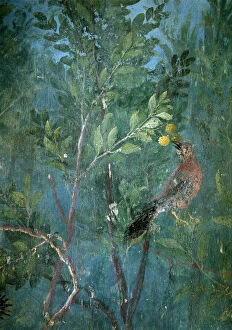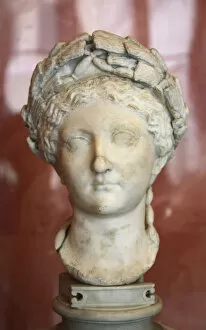Livia Drusilla Collection
"Livia Drusilla: A Woman of Power and Elegance" Livia Drusilla, the esteemed wife of Emperor Augustus
For sale as Licensed Images
Choose your image, Select your licence and Download the media
"Livia Drusilla: A Woman of Power and Elegance" Livia Drusilla, the esteemed wife of Emperor Augustus, was not only a prominent figure in ancient Rome but also an influential force behind the scenes. Her legacy lives on through various artistic representations that showcase her intelligence, beauty, and political acumen. One such representation is the Trompe l'oeil garden from the Villa of Livia. Painted between 40-20 BC, this fresco captures Livia's love for nature and her ability to create breathtaking illusions within her own residence. The intricate details of flowers and foliage transport viewers into a world where art imitates life. In another stunning artwork titled "Virgil Reading the 'Aeneid' to Augustus, Octavia, and Livia, " we witness Livia's appreciation for literature and culture. This painting from 1790/93 depicts her alongside Emperor Augustus as they listen attentively to Virgil reciting his epic poem. It showcases Livia's thirst for knowledge and her desire to be well-informed about matters beyond politics. The cameo featuring Livia highlights her timeless beauty and elegance. Crafted with precision during ancient times, it serves as a testament to her enduring charm that captivated those around her. As depicted in a frieze from the tablinum dating back to 40-20 BC, Livia Drusilla embraced religious symbolism by portraying herself as Ops – goddess of abundance – holding a wheat sheaf and cornucopia. This imagery reflects both her wealth as well as her role in ensuring prosperity within Rome. A bust sculpted during the first century AD further immortalizes Livia's gracefulness. Created by artists skilled in classical Roman sculpture techniques, it showcases every delicate feature that made Livia an icon of beauty during antiquity. Not only did she possess great influence over Emperor Augustus but also had a significant impact on the empire itself.
















